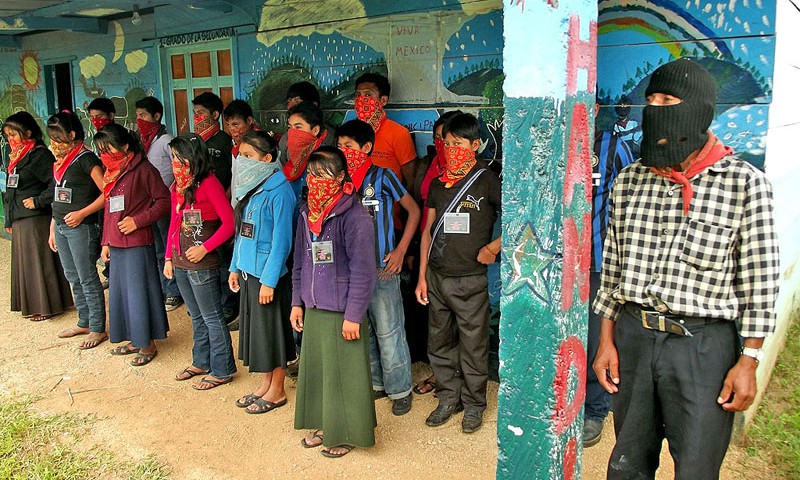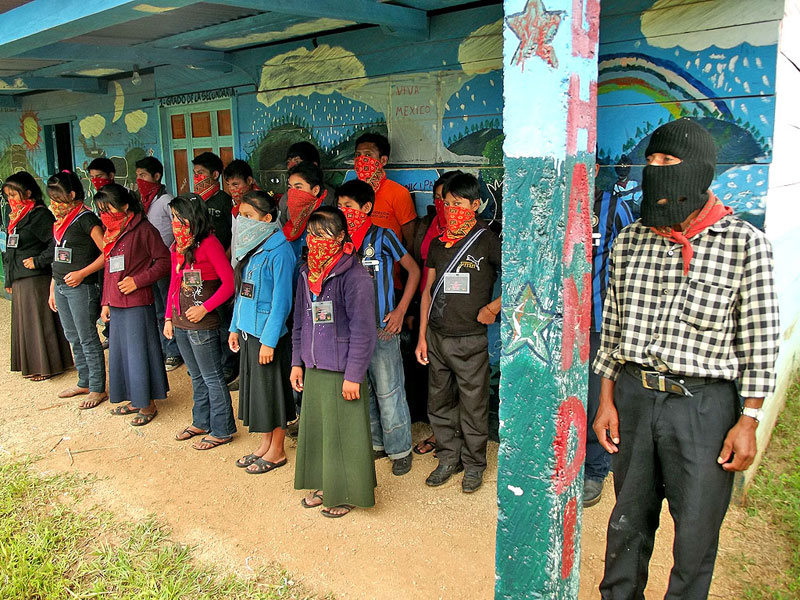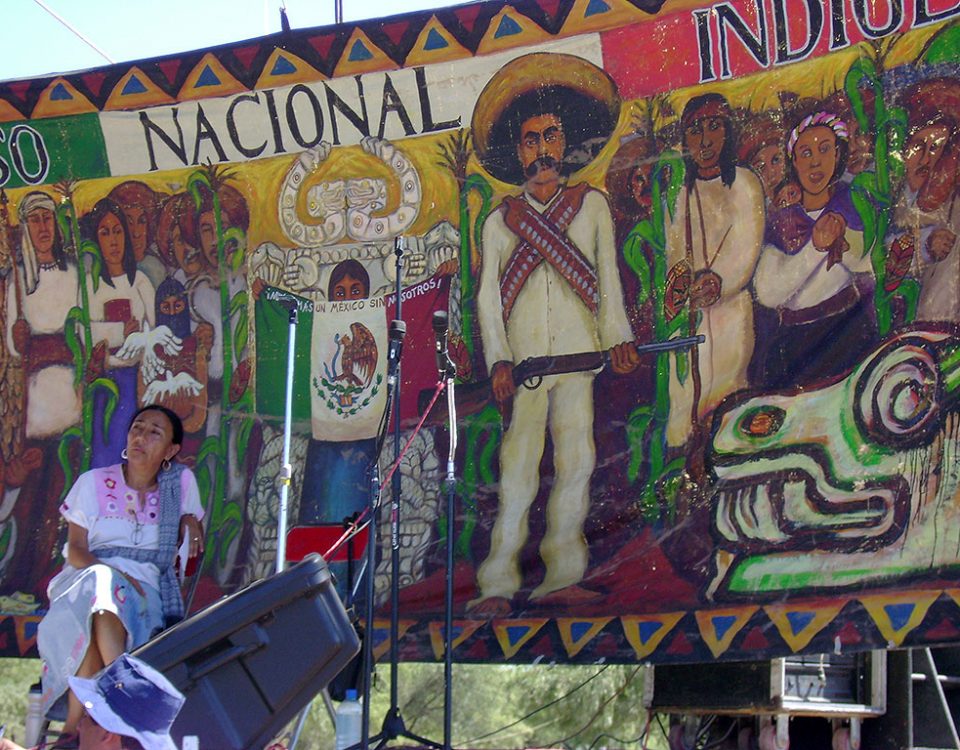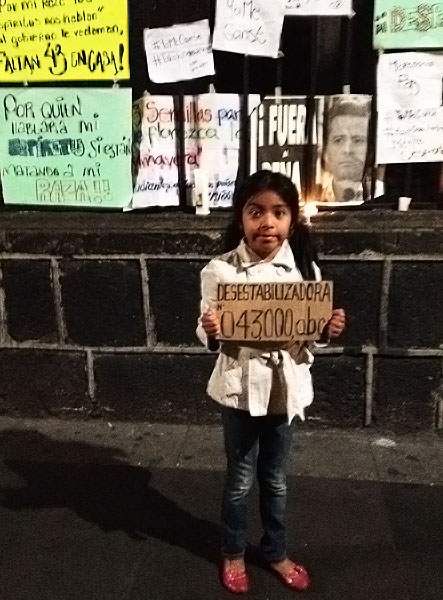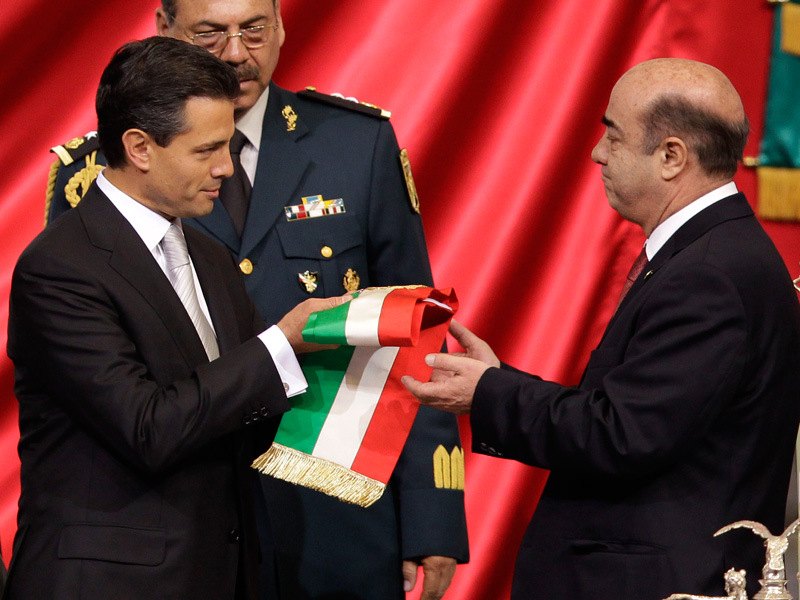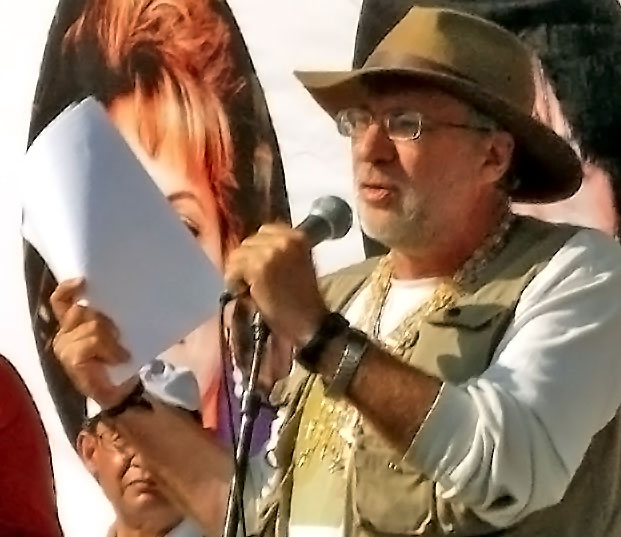2013
16/01/2014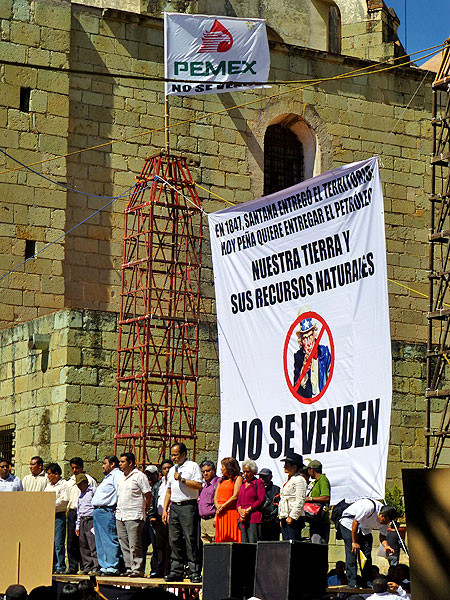
ANALYSIS: First year of Enrique Peña Nieto, with contradictory perceptions of the “Mexican Moment”
21/02/2014Throughout the year, the Zapatista Army of National Liberation (EZLN) published several communiques. Some of them addressed the political context, while others discussed their new initiatives, such as the “little school” (Escuelita) and the creation of the “Trailblazing Lecture ‘Tata Juan Chávez Alonso'”, which it organized jointly with the National Indigenous Congress (CNI) in San Cristóbal de Las Casas in August. More than 4000 students from different states of Mexico and other countries attended the “little school” which was held behind closed doors in the five Caracoles and in San Cristóbal, in August and December. The courses dealt with the issues “Autonomous Government, Participation of Women and Autonomous Resistance,” and the students were invited to stay with a “votán” (a zapatista support-base or an EZLN member who was especially designated to serve as comrade, teacher, and guide).
In the night between December 31 and January 1, 2014, the EZLN celebrated its twenty-year anniversary since its insurrection on January 1, 1994. On December 28, Subcomandante Marcos had released a new communique entitled Rebonine 1 in which he challenged the commercial media and a number of articles which had been published in anticipation of the anniversary of the armed uprising: “You ask what the EZLN has done for indigenous communities. And we are responding with the direct testimony of tens of thousands of our comrades.”
Previously, on December 22, there appeared another communique from Subcomandante Marcos entitled Rebobine 2, that criticized the recently approved structural reforms in Mexico, particularly with regards to energy and education. Furthermore, in a PS, he criticized the wastefulness of promotional media campaigns spent by the present Chiapas state governor (more than $10 million) by calling it “ridiculous” and “illegal“; Marcos saw it as an attempt to hide “misery, the paramilitaries, and the crime rates in the main Chiapas cities” from tourists.
From the beginning to the end of the year, Mexican authorities sent several “messages” to the EZLN. On January 1, governor Manuel Velasco made a call for the observance of the San Andrés Accords on Indigenous Rights and Culture (1996). The governor announced a series of actions by the government regarding concrete conflicts and in regard to the demand for the release of Alberto Patishtán Gómez and Francisco Santiz López. Beyond this, the governor announced his position regarding two questions having to do with local community conflict, noting on the one hand that “We will respect the possessions of Zapatista lands that now are being used with social benefit.” Beyond this, he assured that “all state development programs in communities with Zapatista presence will be careful in their propositions and implementation. It is not our aim to divide communities.” While the governor addressed critical issues, the resolution of several of these questions is out of his hands, depending instead on the federal government. Apropos, on January 25, Francisco Sántiz López, a Zapatista base supporter who had been imprisoned since 2011 was released. On October 31, Alberto Patishtán was also released after having received an official pardon from President Enrique Peña Nieto.
Also in January, the Secretary of Governance announced the decision to transform the Commission for Dialogue and Negotiation in Chiapas into the Commission for Dialogue with Indigenous Peoples. The Secretary noted that with this move it is sought to pay off the debt owed to indigenous peoples, by means of a permanent policy of dialogue to guarantee all peoples access to justice, education, health-care, and infrastructure. Nevertheless, the move seeks to displace the EZLN from center stage, which explains why this decision was challenged for its potentially counter-insurgent purposes.
At the end of the year, shortly before the anniversary of the uprising, the Mexican government issued several new signals of goodwill. On December 19, Manuel Velasco Coello, governor of Chiapas, presented his first government report. He recognized that the debts owed to indigenous communities have yet to be resolved: “I here repeat that my administration will retain its commitment to respecting Zapatismo and to resolving conflicts peacefully”. By the end of December, various prisoners were also released: Miguel Demeza Jiménez and Antonio Estrada Estrada, adherents to the Sixth Declaration of the Lacandona Jungle from the Tseltal ejido of San Sebastián Bachajón, Chilón municipality ; and, Noé Hernández Caballero, leader of the National Organization of People’s Power (ONPP). Finally, the Commissioner for Dialogue with Indigenous Peoples of Mexico, Jaime Martínez Veloz reported that in February 2014 a “major initiative” on Indigenous rights that would collect the San Andres Accords and would incorporate the new national and international standards in the field could be ready.
More broadly, the Las Abejas Civil Society denounced in a communique in June that the government’s counter-insurgent strategy continues to date: “the plan of the government is to repress all those who are not in agreement with their ideas (i.e., neoliberalism), to repress those who want to defend the rights of indigenous peoples, the rights of Mother Earth, and the rights of the people of Mexico. This plan or strategy of repression we see as having two sides, which we have named the ‘bullets of lead,’ as were used in Acteal and in other repressions such as Aguas Blancas, Chavajeval, Atenco, against the students on 1 December and 10 June, against independent workers’ movements and against all those who dare protest. Their other weapon is what we call ‘bullets of sugar,’ whereby they buy off organizations and their leaders through support, public works, government jobs, or other hand-outs that can lead people to shut their mouths and not criticize the robbery of the resources of the country for foreigners and the sell-out politicians who help them in this. Now with Peña Nieto, the “bullets of sugar” are prepared with the “Crusade Against Hunger” which is supported by the same multinationals that take our wealth and are the cause of the hunger of the people “.
It’s worth adding that 16 persons charged for participating in the 1997 Acteal massacre were released in 2013. This now comes to a total of 73 indigenous persons released who previously had been incarcerated for the massacre–not because they are innocent, but because there were violations of due process. Now just six people remain in prison for the crime. One of the most critical case this year was that of Colonia Puebla, Chenalhó municipality, where new aggressions that seem to have a religious basis coincided with the release of some of those accused and incarcerated for the Acteal. Due to agressions agaisnt them, 95 persons have been displaced to Acteal. Civil organizations have denounced the tepid intervention from the state government regarding the investigation and judicial intervention in the case.
Moreover, 2013 was a year of strong social mobilization, particularly due to educational reform (from August to December massive marches were organized by both teachers and parents). Besides, numerous sit-ins, marches, pilgrimages, meeting, and communiqués were carried out by different civil and social organizations throughout the state.

